Future-Ready Strategies to Deliver High-Impact Learning Experiences Now
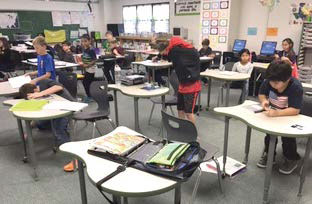
Today’s educators dream of an interconnected educational structure that merges important resources, purposes, and properties into a single productive ecosystem. Unfortunately, this vision is still a far-off dream for many. That’s because in many K–12 districts, the IT department establishes the technology, the curriculum department develops the instructional methodologies, and most of the physical classroom components either are leftovers from the mid-20th century or were purchased and deployed without consulting the instructional teams and students that will use them.
It’s true that some schools and districts have broken down silos in these departments, but change seems to be taking place at a snail’s pace.
At Burnet (TX) Consolidated Independent School District (CISD), we felt that one of the biggest barriers holding us back was actually a design problem. Although our schools were continuing to function very much like they did a century ago, the challenges facing our educators have dramatically changed over the course of those ten decades. In addition, the skills that students will need for future success have changed. And let’s not forget that students themselves have gone through a metamorphosis: they’re simply and verifiably wired differently than those of previous generations.
So with all of these factors in mind, it was time to hit the “redesign” button. We decided to break down the silo approach in the fall of 2016 when we chose to pilot the Inspired Classroom project. Utilizing an infusion of technology, high-impact classroom furniture, teachers’ creativity, and student and community input, we created classrooms that look, feel, and operate differently than traditional models. These changes have resulted in new culture of learning.
The following are four strategies we implemented to create smarter school spaces that deliver high-impact learning environments for our students.
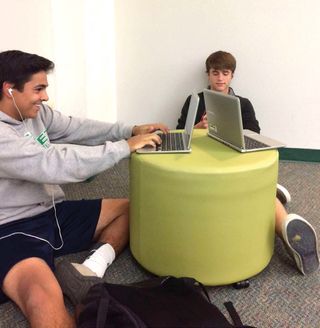
1. The Survey Says! Prior to receiving their Inspired Classroom spaces, teachers and students in the pilot classrooms took a ten-question survey.
They were asked to react to statements like:
Tech & Learning Newsletter
Tools and ideas to transform education. Sign up below.
• The furniture in my classroom helps me to learn
• The furniture in my classroom is comfortable
• We move the furniture around in my classroom
• I get to work together with other people in my classroom
• The furniture helps me use technology in my classroom
The same survey was given again three months later. Interestingly, before the installation, 43 percent of all students surveyed felt that the classroom furniture had no impact on how they learned. After using the new furniture for three months, 88 percent of the students felt that the furniture helped them learn. In fact, two out of three students felt the furniture had a significant beneficial impact on their learning.
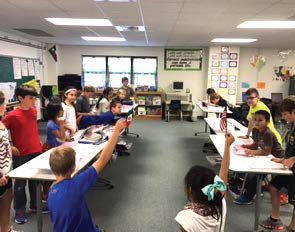
2. Meet and Greet. We brought department ambassadors together, from technology to facilities to teachers, to consider holistic redesign approach. Our project began with a meeting with pilot participants from six schools in September 2016 to share ideas and talk about lesson plans that would take advantage of the new furniture and technology offerings we would be deploying with the help of MeTEOR Education. We defined strategic drivers for the initiative, outlined goals, and determined what criteria we would use to measure and define success. We wanted to know what everyone wanted to hear and see when they walked into the new spaces. After the furniture was installed in October 2016, we held two more meetings, between November 2016 and February 2017, to share ideas, needs, and experiences.
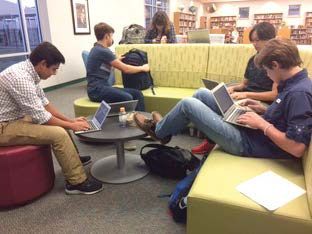
3. Everything Matters—Form, Function, and Teacher Fluency. We were determined to create spaces for active learning experiences, which have been proven to increase student retention and comprehension. One of the first questions to ask when planning the design of new learning environments should be: “How will our students be utilizing the space and the technology as they pursue their learning experience?” Each district will have its own answers to this question. And while the need for new teaching methodologies comes with new spaces, that doesn’t mean new instructional habits will automatically take root. Introduce teachers and school leaders to pragmatic best practices to avoid classroom management challenges and maximize learning by design with modern mobile furnishings, shared, writable wall and desk surfaces, and new technologies.
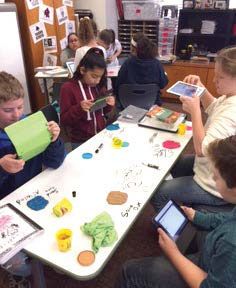
4. Start Small, Dream Big, and Adjust to the Budget Later. There are lots of creative ways to fund projects: from the general budget to local foundations and parent groups. Other options include launching capital donation campaigns and asking voters to approve a bond. We used a generous donation from the Franklin I Fickett Foundation to fund our high-impact learning environments.
Teachers in the pilot program report that the new spaces have been a catalyst for thinking outside the pedagogical box and making lesson plans more collaborative. Additionally, flexible furniture configurations allow students to reorient themselves to different views of the room as needed and encourage the teachers to move around and be more involved.
We weren’t just deploying new furniture and installing new technologies. We instituted a paradigm shift. This project challenged our teachers’ to leave their comfort zones and think beyond the static, straight-row model of learning. The technology and flexible furniture provide new exciting ways for students to learn and increase collaboration while building and strengthening the “soft skills” that are essential in the modern workplace.
Keith McBurnett is superintendent of Burnet CISD in Burnet, Texas.











